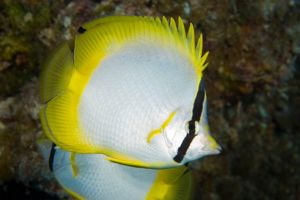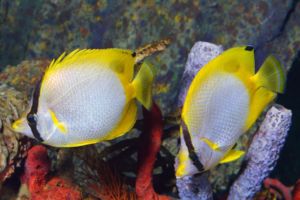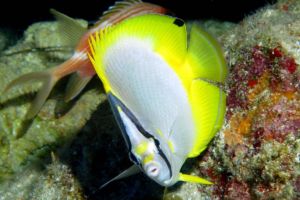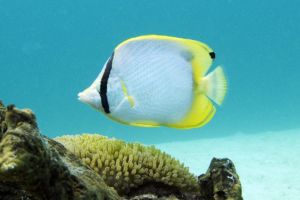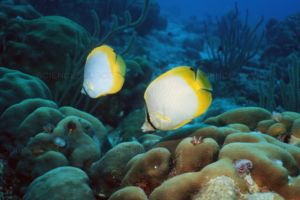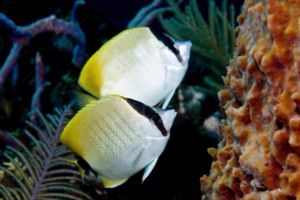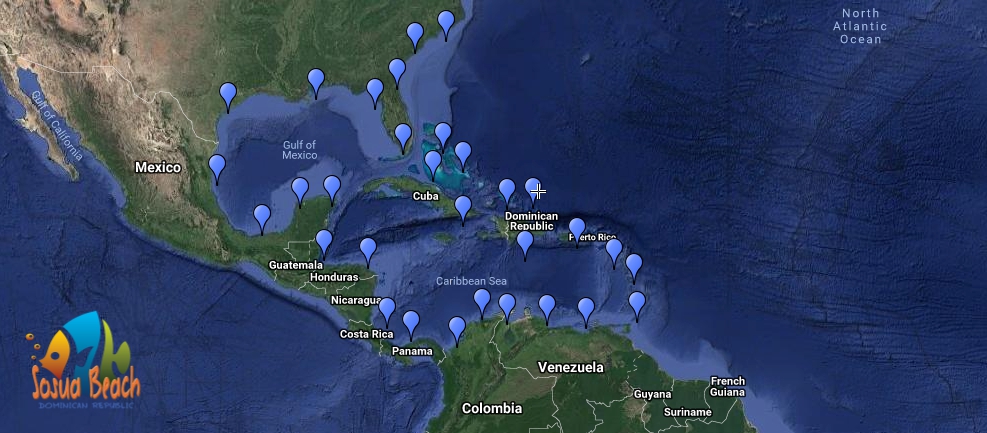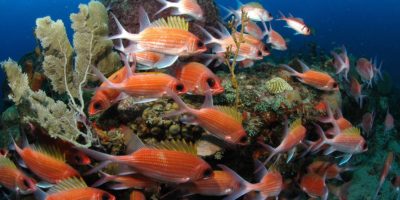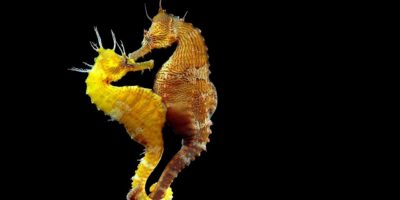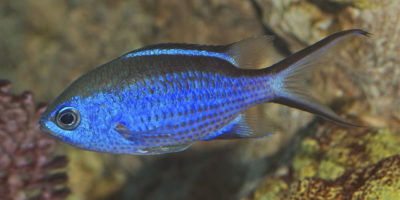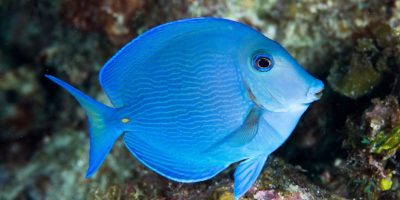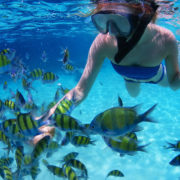The Spotfin Butterfly Fish (Chaetodon ocellatus) is one of those tropical water reef fish most divers love to encounter in the wild, and aquarium enthusiasts want to own and breed in captivity. It is easy to identify, with its oval-shaped body, small mouth and white body; the fins are bright yellow, and a black bar runs across its head, over the eye. It can grow to 8 inches in size.
Photo Gallery
The black bar across the head serves the purpose of confusing predators by hiding the real eye and having an eye spot near the tail. A predator normally attacks the head, and when attacking the wrong end, the Spotfin can make a quick escape to safety. In juveniles, a second black bar runs from the base of the dorsal fin to the base of the anal fin; and the fins are all yellow or transparent.
Habitat & Range
This species inhabits the Western Atlantic Ocean and the Gulf of Mexico, including the Caribbean Sea tropical waters, around latitudes 37°N – 8°N, 99°W – 58°W. It is common in the Dominican Republic, including Sosua`s shallow reefs of depths of 0-30 meters. It is a solitary species, that forms pairs when breeding. It will often select a crevice or coral head and spend most of its life there. Juveniles reside in sea grass beds, and adults are often found in pairs or small groups.
Feeding & Defense
The Spotfin butterflyfish is a daytime feeder. They rely on vision to catch their prey, and feed on anemones, tube worms, gorgonians and tunicates. They are quick to swim out when sensing danger, and use defense when needed. It has sharp fin rays that are extended when the fish feels threatened.
Reproduction
This species spawns at early dusk in pairs, and the courtship starts chasing each other around in circles, until one swims off and the other follows. It is believed they spawn all year, peaking during summer. The eggs hatch into larvae within a day of fertilization, drifting in the ocean, hence the wide range. Shallow water predators eat most of the juveniles, and those who escape stay alive in the crevices until they become adults.
On Video
Sources:
- Fishbase – Spotfin Butterfly Fish
- Acqua.org – Chaetodon ocellatus
- Lamar.edu – Spotfin Butterfly fish


